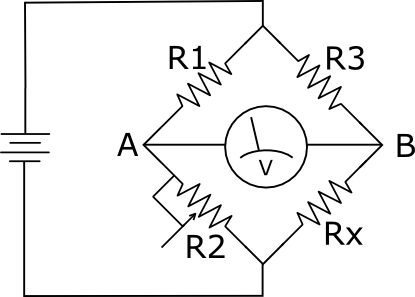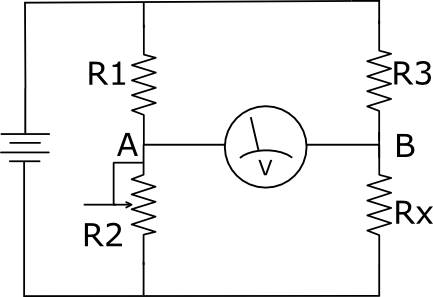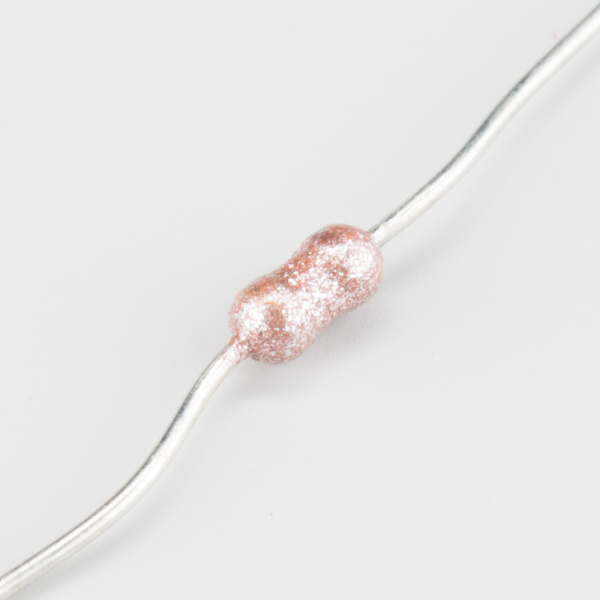Decade Resistance Box Hookup Guide
As a Measurement Tool
Decade boxes can be very useful on an electronics test bench. One traditional application of a decade box is to measure an unknown resistance.
Wheatstone Bridge
The Wheatstone Bridge is a DC circuit that uses three resistors of known value to measure a fourth resistor (or even other materials, such as soils or liquids). The Wheatstone bridge is commonly drawn as a diamond, as shown below.
Notice that there is a battery (or other DC source) on the left, powering the top and bottom of the diamond. At the center of the diamond, between points A and B, is a voltmeter.
The diamond drawing obscures what's really happening in the circuit. If we rearrange and redraw the circuit, we recognize that it's a pair of resistive voltage dividers.
The voltage at point A is determined by the ratio of R1 and the variable resistance R2, while the voltage at point B is determined by the ratio of R3 and the unknown Rx. If the two ratios are the same, the A and B will have the same voltage, and we can infer the value of Rx.
R2/R1 = Rx/R3
Which we can solve for Rx:
R3(R2/R1) = Rx
And if R1 is equal to R3, it simplifies to
R2 = Rx
If R2 is a decade box, we can simply read it's value, and we'll know the value of the unknown resistor!
Wheatstone Bridge In Action
To test my Wheatstone bridge, I had one of my colleagues pull a random resistor from my spare parts box, and paint it over, so I couldn't read the stripes.
I built a Wheatstone bridge using a 9V battery, and 100K resistors for R1 and R3. The unknown resistor was inserted as Rx, and a decade box was inserted as R2. A digital voltmeter was inserted between points A and B, the centers of the dividers.
The value of the decade box was adjusted until the voltage displayed on the meter was as close to 0V as could be reached. In this case, the meter was flickering between 0.000 and -0.001. At that point, the value of the decade box matched the value of the unknown resistor. As you can see, we measured 9,960 Ω. The mystery resistor was probably a 10K Ω, +/- 5% tolerance resistor.
In practical terms, it would have been easier to just use the digital multimeter to read the resistor directly, but Wheatstone bridges have uses in certain types of instrumentation - they can be configured to observe very small changes in resistance, such as the output of a strain gauge. They're also known to torment engineering students in circuit class laboratories!



